SDAFF 2019: The Paradise We Are Looking For: Four Riveting Shorts That Don’t Short Change
November 8, 2019
By Dr. Craig D. Reid
 December 8, 2008, I had just finished watching a documentary about the December 7, 1941, “a date that will live in infamy” Japanese attack on Pearl Harbor, the sounds of dive bombing planes freshly etched into my mind. My wife and I live on the edge of a canyon in University City, San Diego, where we often see and hear fighter jets streaking westward after taking off from the Marine Corps Air Station Miramar then making their final run in preparation for landing back at the base.
December 8, 2008, I had just finished watching a documentary about the December 7, 1941, “a date that will live in infamy” Japanese attack on Pearl Harbor, the sounds of dive bombing planes freshly etched into my mind. My wife and I live on the edge of a canyon in University City, San Diego, where we often see and hear fighter jets streaking westward after taking off from the Marine Corps Air Station Miramar then making their final run in preparation for landing back at the base.
As I was thinking about my dad, a sergeant major in the British Army and his roll during World War II, I heard an awkward screechy sound and felt a peculiar vibration of a jet losing altitude and speed as it past o’er our home. A sound I’d never heard live before yet it was slightly reminiscent of something I just heard in the documentary. It was a weird coincidence, yet I don’t believe in coincidences. Moments later…
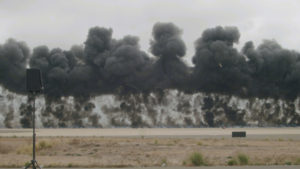 After watching last night’s, San Diego Asian Film Festival’s opening film, The Paradise We Are Looking For, a series of four shorts commissioned by San Diego’s Pacific Arts Movement (Pac-Arts) in celebration of SDAFF’s 20th Anniversary, which highlighted Asian America stories from neighborhoods that have Asian American or Pacific Islander roots as the source material, everyone learned the outcome of the jet and how it affected all San Diegans and perhaps stronger, local Korean American communities.
After watching last night’s, San Diego Asian Film Festival’s opening film, The Paradise We Are Looking For, a series of four shorts commissioned by San Diego’s Pacific Arts Movement (Pac-Arts) in celebration of SDAFF’s 20th Anniversary, which highlighted Asian America stories from neighborhoods that have Asian American or Pacific Islander roots as the source material, everyone learned the outcome of the jet and how it affected all San Diegans and perhaps stronger, local Korean American communities.
The pair-of-dice SDAFF was looking for, could have been a gamble, yet it wasn’t. It was a well-constructed choice of four engaging, yet completely different approaches to storytelling and perspective presentations that share unique slices of life and reveal how Asian American communities everywhere in the United States add to the apple pie of the American landscape.
 Norbert Shieh’s directed Two Miles East, an idea presented by the former Pac-Arts executive director Lee Ann Kim, soulfully revealed the flight of the limping Marine Corp’s Hornet F-18 jet as through black box recordings we can follow those last fateful few miles as it struggled back from the coast in hopes of landing in Miramar. The airman was able to pilot the plane away from the crowded lunchtime activities of the local high school and eject from the plane before it disastrously crashed and exploded into two homes.
Norbert Shieh’s directed Two Miles East, an idea presented by the former Pac-Arts executive director Lee Ann Kim, soulfully revealed the flight of the limping Marine Corp’s Hornet F-18 jet as through black box recordings we can follow those last fateful few miles as it struggled back from the coast in hopes of landing in Miramar. The airman was able to pilot the plane away from the crowded lunchtime activities of the local high school and eject from the plane before it disastrously crashed and exploded into two homes.
One of the homes consumed in the blaze belonged to Don Yoon, who at the time of the crash was at work. Grievously, his wife Youngmi, children Rachel and Grace, and his mother-in-law Seokim Kim-Lee all perished. What is most amazing and memorable is Yoon’s press interview and how his words were not about finger pointing or blame games. Though most San Diegans never knew the outcome of what happened or didn’t happen, Shieh reveals the final results of the investigation, that there was no military cover up and how the love and unity of the local Korean community holds the memory of Yoon’s loss close to their hearts.
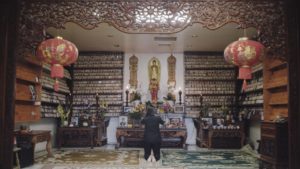 The next short, The Morning Passing on El Cajón Boulevard, deals with loss in a different manner, which proffers an answer to the question that many wonder about …why would someone want to become a mortician? Director Quyên Nguyen-Le follows the boulevard or path of first generation Vietnamese American Julie Tran as we are introduced to Tran in City Heights, kneeling before a Buddhist shrine in prayer position, holding incense between the hands and is surrounded by walls covered in photographs of individuals who have passed on. I saw something similar when I lived in Taiwan in 1979-81.
The next short, The Morning Passing on El Cajón Boulevard, deals with loss in a different manner, which proffers an answer to the question that many wonder about …why would someone want to become a mortician? Director Quyên Nguyen-Le follows the boulevard or path of first generation Vietnamese American Julie Tran as we are introduced to Tran in City Heights, kneeling before a Buddhist shrine in prayer position, holding incense between the hands and is surrounded by walls covered in photographs of individuals who have passed on. I saw something similar when I lived in Taiwan in 1979-81.
Her parents being refugees from Vietnam and never speaking about their past, Tran feverishly wants to make sure that her generation does something to maintain their culture. As a child she suffered the loss of many friends and family members and ended up helping out at funerals. Yet when here grandmother past away 20 years ago (her grandfather soon thereafter), the way that funeral director Do Thai Uyen, guided and gave the family a sense of hope throughout the funeral, Tran’s destiny had arrived.
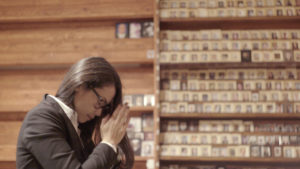 She now at works at the funeral home, Good Bye Mortuary, which offers Vietnamese customers traditional Vietnamese funerals that American funeral homes are unable to perform. As we the see the somewhat heavy hearted karmic nature of her profession coming to pass on a personal level we can admire Tran for her fearless courage and steadfastness to do what needs to be done.
She now at works at the funeral home, Good Bye Mortuary, which offers Vietnamese customers traditional Vietnamese funerals that American funeral homes are unable to perform. As we the see the somewhat heavy hearted karmic nature of her profession coming to pass on a personal level we can admire Tran for her fearless courage and steadfastness to do what needs to be done.
The tide of emotions fluctuate with director Joseph Mangat’s intelligent and riveting Bidyoke, an Ode to Karaoke featuring an assorted and spirited group of patrons that frequent the Gapo Resto karaoke-restaurant in National City, which based on the highly entertaining singers and crooners highlight in the short, of predominantly Filipino
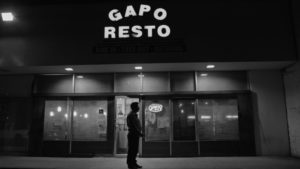 A man with a voice like sand and blue introduces the short telling us that a Filipino invented karaoke but the Japanese popularized it. He later shares that when words were put on videos is was called Bidyoke in the Philippines.
A man with a voice like sand and blue introduces the short telling us that a Filipino invented karaoke but the Japanese popularized it. He later shares that when words were put on videos is was called Bidyoke in the Philippines.
As it turns out, the first karaoke machine was built by the Japanese musician Daisuke Inoue in 1971 yet it was Filipino Roberto del Rosario who holds the machine’s patent and would later create the Sing-Along System in 1975,
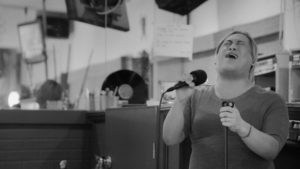 What’s so delightful about Gapo is not only do many singers have vocal abilities similar to the finalists on American Idol but they also have profound reasons why they regularly sing there, for examples, loss, loneliness and love. Additionally it’s not about getting in front of the audience and letting loose, folks can sit at their tables or drop by for their pickup and let loose for a maximum of two songs. There’s also a strong sense of community between the DJ’s and patrons who sing for themselves and everyone within earshot.
What’s so delightful about Gapo is not only do many singers have vocal abilities similar to the finalists on American Idol but they also have profound reasons why they regularly sing there, for examples, loss, loneliness and love. Additionally it’s not about getting in front of the audience and letting loose, folks can sit at their tables or drop by for their pickup and let loose for a maximum of two songs. There’s also a strong sense of community between the DJ’s and patrons who sing for themselves and everyone within earshot.
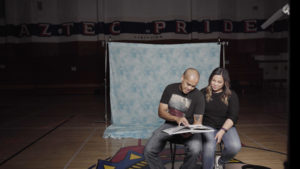 When director R.J. Lozado’s Reunion ’99, became the impetus behind the organization of the 20-year, Montgomery high school class of 1999 reunion, a school mostly comprised of Mexican and Filipino students, with a handful of whites and African Americans, his plan was interview students about what they remember about high school, why do you still carry them and lessons learned since then. Yet at the end of the day, his film ends up being a journey of emotional healing for Lozado and the interviewees, especially when relive their moment of camera and you can see their own realizations hitting home.
When director R.J. Lozado’s Reunion ’99, became the impetus behind the organization of the 20-year, Montgomery high school class of 1999 reunion, a school mostly comprised of Mexican and Filipino students, with a handful of whites and African Americans, his plan was interview students about what they remember about high school, why do you still carry them and lessons learned since then. Yet at the end of the day, his film ends up being a journey of emotional healing for Lozado and the interviewees, especially when relive their moment of camera and you can see their own realizations hitting home.
In life, physical, mental and emotional pain makes us think. From thought we become wise and with wisdom comes life. This movie is kind of information that would be valuable for current high school student to watch because one will realize that although each generation faces different scenarios of life during high school, the emotional feeling, directions of life confusion and lessons learned are same for everyone. Hearing how someone who’s experienced what you’re going through now (same is true about everything in life), the light at the high school tunnel is brighter and perhaps more doable…especially emotionally.
 Particularly poignant issues from class of 1999 dealt with fear of coming out, racism, death, and perhaps the most difficult interview for the Filipino-American director…interviewing his high school sweetheart and process those feeling.
Particularly poignant issues from class of 1999 dealt with fear of coming out, racism, death, and perhaps the most difficult interview for the Filipino-American director…interviewing his high school sweetheart and process those feeling.
At the end of the day, everyone has a story and something valuable to tell. Whether it’s via writing, singing, making a film or speaking to someone, share what you know and learn from others. If you never ask for something, the answer is always no. Consider you’re only limited by what you think you can’t do.

 tweet
tweet share
share